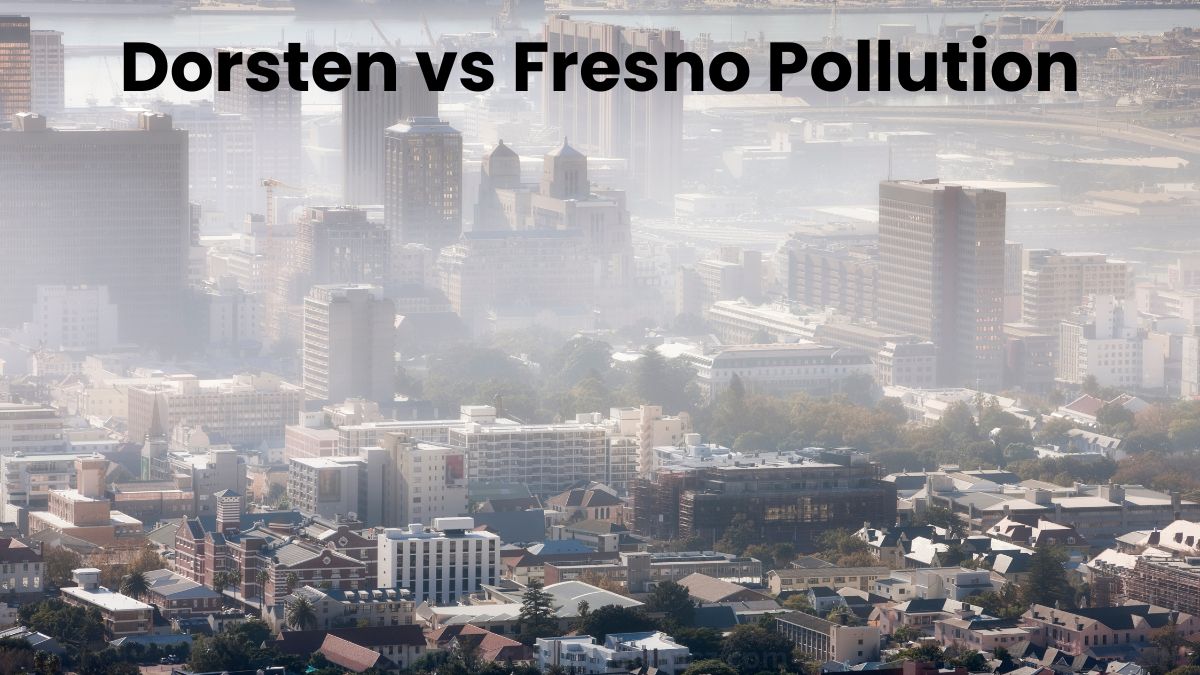A Trekkers Dream Conquering Everest Base Camp and Gokyo Lakes

Embarking on the Everest Base Camp and Gokyo Lakes trek is the ultimate dream for many trekkers, blending the thrill of reaching the base of the world’s highest peak with the serene beauty of pristine high-altitude lakes. This adventure takes you through the heart of the Himalayas, offering a journey that is both physically demanding and deeply rewarding.
The trek begins with a dramatic flight from Kathmandu to Lukla, a small town perched on a cliff, where the adventure truly starts. From Lukla, the trail winds through lush forests and quaint Sherpa villages, immersing you in the vibrant local culture. The first major highlight is Namche Bazaar, a bustling market town that serves as a vital acclimatization stop. Here, you can experience Sherpa hospitality and explore local markets before continuing your ascent.
As you trek towards Everest Base Camp, the scenery evolves dramatically. The path leads through dense rhododendron forests, across suspension bridges, and past impressive monasteries like Tengboche, offering stunning views of the surrounding peaks. The trek becomes more challenging as you approach higher altitudes, but the breathtaking vistas of Everest, Lhotse, and Nuptse keep you motivated. Reaching Everest Base Camp is an emotional milestone, where you stand at the foot of the highest peak on Earth, gazing up at its towering face and feeling a profound sense of achievement.
After visiting Everest Base Camp, the trek continues to the Gokyo Lakes, which offer a serene contrast to the rugged terrain of the Everest region. The Gokyo Lakes, a series of five turquoise glacial lakes nestled in the Gokyo Valley, are surrounded by snow-capped peaks, creating a tranquil and awe-inspiring landscape. The ascent to Gokyo Ri, a summit overlooking the lakes, provides one of the trek’s most spectacular viewpoints, with panoramic vistas that include Everest, Lhotse, Makalu, and Cho Oyu.
The trek is not just about the physical challenge; it’s also an opportunity to immerse yourself in the rich culture and spiritual heritage of the Sherpa people. Throughout the journey, you encounter traditional villages, ancient monasteries, and the daily life of the Sherpas, whose warm hospitality adds a unique dimension to the adventure.
Proper preparation is key to successfully conquering this trek. The high altitude requires careful acclimatization to avoid altitude sickness, and the rugged terrain demands sturdy gear and physical fitness. Trekking with a guide or as part of a group can enhance safety and provide local insights, enriching the experience further.
Conquering Everest Base Camp and Gokyo Lakes is a trekker’s dream realized, combining the physical challenge of high-altitude trekking with the beauty of the Himalayas and the cultural richness of the Sherpa region. It is an adventure that leaves a lasting impression, offering a sense of accomplishment and a deep connection to one of the world’s most majestic landscapes.
Introduction to the Trekker’s Dream
The Climb Mount Everest Base Camp and Gokyo Lakes trek is often considered the pinnacle of trekking adventures, embodying the ultimate dream for many outdoor enthusiasts. This dual trek offers an unparalleled journey through the heart of the Himalayas, combining the iconic challenge of reaching Everest Base Camp with the serene beauty of the Gokyo Lakes. It’s a trek that not only tests physical endurance but also provides a deep, immersive experience in one of the world’s most breathtaking regions.
The trek takes you through diverse landscapes, from lush forests and vibrant villages to high-altitude deserts and sparkling lakes, showcasing the rich natural beauty and cultural heritage of the Everest region. The combination of these two treks into one comprehensive journey allows trekkers to experience the grandeur of Everest up close and enjoy the tranquil beauty of Gokyo’s glacial lakes, making it a dream adventure that offers both challenge and reward.
Overview of Everest Base Camp
Everest Base Camp, located at an elevation of 5,364 meters, is the iconic destination for trekkers aspiring to stand at the base of the world’s highest peak. The trek to Everest Base Camp is renowned for its stunning vistas, challenging terrain, and the sense of accomplishment it offers. Starting from Lukla, the journey leads through vibrant Sherpa villages, dense forests, and across rugged mountain trails.
Key highlights include the impressive Khumbu Glacier, the historic Tengboche Monastery, and the breathtaking views of Everest, Lhotse, and Nuptse. Reaching the base camp itself is a significant milestone, offering a close-up view of Everest’s southern face and the surrounding peaks. This part of the trek is not just about reaching a destination but about experiencing the awe-inspiring landscape and the unique atmosphere of being at the foot of the highest mountain on Earth.
Overview of Gokyo Lakes
The Gokyo Lakes, situated in the Gokyo Valley at an altitude of approximately 4,700 meters, offer a stunning contrast to the rugged terrain of the Everest Base Camp trek. This series of five glacial lakes, with their striking turquoise waters set against snow-capped peaks, provides a serene and picturesque retreat from the more challenging parts of the trek.
The trek to the Gokyo Lakes includes an ascent to Gokyo Ri, a peak that offers panoramic views of the Everest massif, including Everest, Lhotse, Makalu, and Cho Oyu. The tranquil beauty of the lakes and the surrounding landscape make this section of the trek particularly memorable. The Gokyo Lakes are less crowded compared to Everest Base Camp, offering a peaceful environment where trekkers can enjoy the pristine natural beauty and reflect on their journey.
Benefits of Conquering Both Treks
Combining the Everest Base Camp and Gokyo Lakes treks into a single adventure offers several unique benefits. First, it provides a comprehensive exploration of the Everest region, showcasing both the iconic challenge of reaching Everest Base Camp and the serene beauty of the Gokyo Lakes. This combined trek offers a varied experience, from the dramatic landscapes and cultural richness around Everest to the tranquil, picturesque views around Gokyo.
Additionally, trekking both routes allows for better acclimatization, as the varied altitudes and gradual ascent help the body adjust more effectively to high elevations. The combined trek also offers a more immersive experience of the Sherpa culture and the diverse natural environments of the Khumbu region. Overall, the benefits of conquering both treks include a richer, more diverse adventure that captures the essence of the Himalayas in its entirety.
Best Time to Plan Your Trek
The optimal times to undertake the Everest Base Camp and Gokyo Lakes trek are during the pre-monsoon spring (March to May) and post-monsoon autumn (September to November) seasons. During these periods, the weather is generally stable, with clear skies and relatively mild temperatures, making it ideal for trekking in the high-altitude environment. In spring, the lower elevations are adorned with blooming rhododendrons, adding vibrant colors to the landscape, while autumn offers cooler temperatures and clearer air, providing excellent visibility of the surrounding peaks.
Both seasons avoid the extreme cold of winter and the heavy snowfall or rain of the monsoon, which can complicate trekking conditions. Trekking during these optimal times ensures a more comfortable experience and better chances of witnessing the breathtaking vistas and natural beauty that the Everest and Gokyo regions have to offer.
Essential Packing List
Embarking on the Everest Base Camp and Gokyo Lakes trek demands careful packing to ensure comfort and safety in the challenging Himalayan environment. Begin with a durable, waterproof trekking jacket and pants to protect against snow and rain, complemented by a high-quality down jacket and thermal layers for warmth. Sturdy trekking boots with excellent ankle support are essential for traversing the rugged terrain, while trekking poles can provide added stability on uneven ground. An insulated sleeping bag rated for temperatures well below freezing is crucial for comfort at higher elevations.
Additionally, pack a comprehensive first aid kit, including altitude sickness medication, blister treatment, and general health supplies. Personal items such as sunglasses with UV protection, high-SPF sunscreen, and a hat are important for sun protection at high altitudes. Carry a reliable water purification system or purification tablets to ensure access to clean drinking water.
A daypack for carrying snacks, water, and daily essentials is also necessary. Don’t forget extra batteries and memory cards for your camera, as the cold can quickly drain battery life. Proper packing ensures that you are well-prepared to handle the diverse conditions and challenges of the trek, contributing to a successful and enjoyable adventure.
Necessary Permits and Regulations
To undertake the Everest Base Camp and Gokyo Lakes trek, trekkers need to obtain specific permits and adhere to regulations. The primary permits required are the Sagarmatha National Park Entry Permit and the TIMS (Trekkers’ Information Management System) card. The Sagarmatha National Park Entry Permit is essential for accessing the national park and can be obtained from the Nepal Tourism Board office in Kathmandu or at the park entrance in Monjo.
The TIMS card, which helps track trekkers for safety and management purposes, can be acquired through authorized trekking agencies in Kathmandu or Pokhara. Both permits should be carried at all times and presented at checkpoints along the route. It’s also important to check for any updates or changes in regulations before starting the trek, as policies may be revised. Ensuring that all necessary permits and documentation are in order is crucial for a smooth trekking experience, avoiding potential delays or complications along the way.
Daily Itinerary Breakdown
The daily itinerary for the Everest Base Camp and Gokyo Lakes trek is designed to balance trekking, acclimatization, and exploration. The journey typically starts with a flight from Kathmandu to Lukla, followed by a trek to Phakding. On the second day, trekkers ascend to Namche Bazaar, a vital acclimatization stop where they can explore and acclimate.
The following days include treks to Tengboche and Dingboche, with an acclimatization day in Dingboche to adjust to the altitude. From Dingboche, trekkers proceed to Lobuche, with a day hike to Everest Base Camp and a return to Gorak Shep. The trek then continues to the Gokyo Lakes, passing through Machhermo before reaching Gokyo.
An ascent to Gokyo Ri provides panoramic views of the Everest massif. The return journey retraces the route back to Lukla, concluding with a flight back to Kathmandu. This itinerary ensures proper acclimatization, ample time to appreciate key highlights, and a comprehensive exploration of the Everest region.
Tips for Acclimatization
Acclimatization is crucial for a safe and successful Everest Base Camp and Gokyo Lakes trek due to the high-altitude environment. Gradual ascent is essential; avoid increasing elevation by more than 500 meters per day to allow your body time to adjust. Incorporate acclimatization days into your itinerary, such as those in Namche Bazaar and Dingboche, to help your body acclimate to the thinning air.
Recognize and address symptoms of altitude sickness early, including headaches, nausea, and dizziness, by descending to a lower altitude if necessary. Staying well-hydrated and consuming high-energy, nutritious foods can support acclimatization and overall health. Walking at a steady, slow pace helps reduce the risk of altitude sickness.
Consider using altitude sickness medications as a preventive measure, but always follow the advice of your guide or healthcare professional. Adequate rest and gradual acclimatization are key to managing the effects of high altitudes and ensuring a successful trek.
Cultural Insights Along the Journey
The Everest Base Camp and Gokyo Lakes trek offers rich cultural experiences that enhance the journey through the Khumbu region. Starting in Namche Bazaar, trekkers encounter vibrant Sherpa culture and traditional architecture. Local markets, monasteries, and community interactions provide insights into daily life and customs.
Tengboche Monastery, a significant Buddhist site, offers opportunities to witness traditional ceremonies and gain spiritual insights. Villages such as Dingboche and Lobuche allow for further immersion in Sherpa culture, with interactions that reveal agricultural practices, local crafts, and community life.
Along the trail, the use of prayer flags, mani stones, and chortens (stupas) reflects the deep Buddhist influence in the region. Engaging with local customs and traditions, and participating in cultural practices, adds a meaningful dimension to the trek. This cultural immersion enriches the trekking experience, offering a deeper understanding of the people and their heritage in the majestic setting of the Himalayas.
Scenic Highlights and Views
The Everest Base Camp and Gokyo Lakes trek is renowned for its breathtaking scenic highlights and panoramic views, making it a photographer’s paradise and a trekker’s dream. The journey begins with the dramatic flight to Lukla, offering sweeping aerial views of the Himalayas. As you trek through the Khumbu region, the landscapes continuously evolve, revealing lush forests, vibrant rhododendron blooms, and rugged mountain terrain.
Key scenic highlights include the awe-inspiring vistas from Namche Bazaar, where you can see the towering peaks of Everest, Lhotse, and Nuptse on the horizon. The trek to Tengboche features stunning views of the Everest massif and offers a unique perspective of the iconic peaks. The ascent to Everest Base Camp rewards you with close-up views of the Khumbu Glacier and the dramatic icefall.
Moving towards Gokyo Lakes, the turquoise waters of the lakes contrast beautifully with the surrounding snow-capped peaks. The climb to Gokyo Ri is particularly rewarding, providing panoramic views that include not only Everest but also Makalu, Cho Oyu, and the entire Himalayan range. Each day of the trek presents new and spectacular vistas, making it a continually mesmerizing experience for those who venture into this high-altitude wonderland.
Safety and Health Considerations
Safety and health are paramount on the Everest Base Camp and Gokyo Lakes trek, given the high-altitude environment and challenging terrain. Acclimatization is critical to prevent altitude sickness; trekkers should follow a gradual ascent plan, including acclimatization days in key locations like Namche Bazaar and Dingboche. Recognize symptoms of altitude sickness—headaches, nausea, and dizziness—and descend to a lower altitude if symptoms persist.
Staying hydrated and consuming high-energy foods are essential for maintaining energy and health. It is also crucial to have a comprehensive first aid kit, including medications for altitude sickness, blister treatment, and general health supplies. Weather conditions in the Himalayas can be unpredictable, so wearing layers of clothing and having waterproof gear is necessary.
Trekking with a guide or in a group enhances safety, as experienced guides can manage emergencies and provide local insights. Informing someone of your trekking plans and expected return date ensures that you have a support system in case of any issues. By prioritizing safety and health, you can navigate the trek’s challenges and fully enjoy the experience.
Accommodation Choices
Accommodation options along the Everest Base Camp and Gokyo Lakes trek range from basic teahouses to more comfortable lodges, catering to varying levels of comfort and amenities. In lower-altitude areas like Lukla and Namche Bazaar, trekkers can find more modern lodges with private rooms and additional facilities. As the trek progresses to higher elevations, accommodations become simpler, with teahouses offering shared rooms and basic amenities. Villages such as Phakding, Tengboche, and Dingboche provide essential lodging with communal bathrooms and basic comforts.
In the higher reaches of the trek, such as Lobuche and Gorak Shep, teahouses offer minimal amenities but provide necessary shelter and warmth. At Everest Base Camp itself, accommodations are rudimentary, consisting of tents set up for trekkers. Similarly, the Gokyo Valley features teahouses that offer essential services, with accommodations becoming increasingly basic at higher altitudes. Each teahouse and lodge typically offers meals, including local dishes like dal bhat and noodle soup, designed to provide the energy needed for the demanding trek.
Tips for Photography Enthusiasts
For photography enthusiasts, the Everest Base Camp and Gokyo Lakes trek offers numerous opportunities to capture stunning landscapes and cultural moments. To make the most of these opportunities, start by preparing your camera gear for high-altitude conditions; cold temperatures can drain batteries quickly, so bring extra batteries and memory cards.
The early morning and late afternoon light provides the best conditions for capturing the dramatic peaks and colorful skies, so plan to start your hikes early and take advantage of the golden hours. At key viewpoints such as Namche Bazaar, Tengboche, and Gokyo Ri, take time to set up your shots and capture the expansive panoramas.
For close-up shots, be sure to capture the vibrant colors of the Gokyo Lakes and the intricate details of local cultural elements like prayer flags and mani stones. Using a tripod can be helpful for low-light conditions and to achieve sharper images of the stunning landscapes. Lastly, respect local customs and always ask permission before photographing people, particularly in religious or cultural settings. With careful planning and attention to detail, you can document the incredible beauty of this remarkable trek.
Conclusion and Resources for Further Planning
The Everest Base Camp and Gokyo Lakes trek is a dream adventure that combines the thrill of reaching the foot of the world’s highest peak with the serene beauty of high-altitude lakes. This trek offers an unparalleled experience, showcasing the majestic landscapes, rich cultural heritage, and challenging terrain of the Himalayas.
For further planning, consult resources such as trekking guidebooks, online forums, and travel agencies specializing in Himalayan adventures. Books like “Everest: The West Ridge” by Thomas Hornbein and “The Trekker’s Guide to Nepal” provide valuable insights and preparation tips. Websites such as the Nepal Tourism Board offer up-to-date information on permits, regulations, and travel advice.
Engaging with these resources will help you prepare thoroughly for the trek, ensuring that you are well-equipped to handle the challenges and fully appreciate the remarkable beauty and culture of the Everest region. With careful planning and preparation, your trek to Everest Base Camp and Gokyo Lakes will be a memorable and rewarding adventure.




